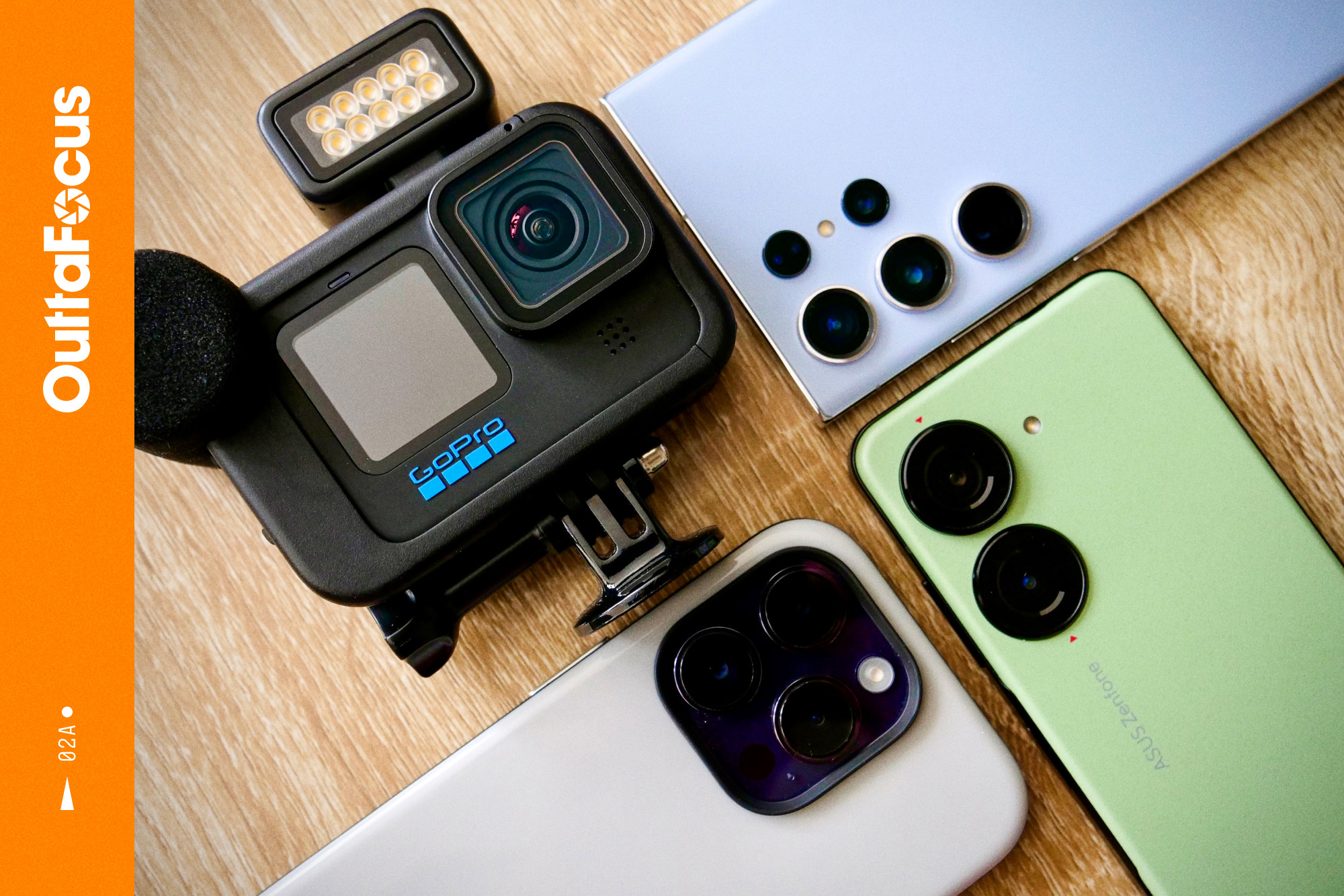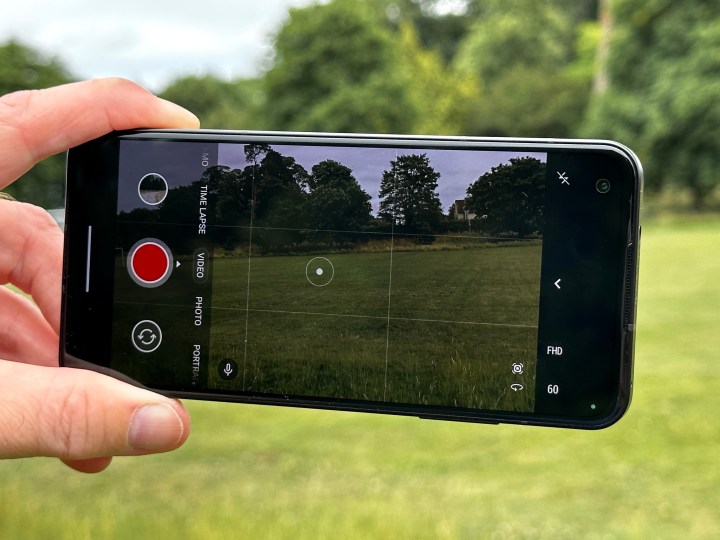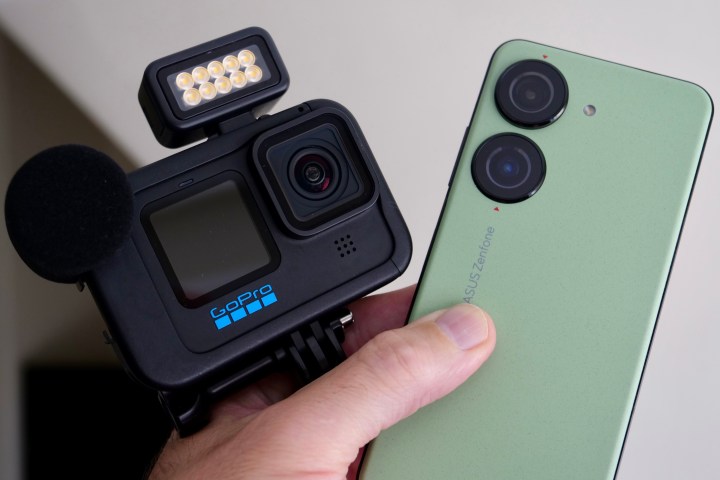
The Asus Zenfone 10’s camera is attached to a gimbal, and with it comes the promise of shooting steady, shake-free video even when you’re moving around.
Does this mean it can take on the mighty GoPro, and perhaps mean you only need to carry around one device instead of two? To find out, we put the Zenfone 10 against the latest GoPro camera and two of its smartphone peers.
Understanding the Zenfone 10’s gimbal

Before we look at the performance, here’s what the Zenfone 10’s gimbal is all about. It’s the second generation of technology introduced on the Zenfone 9, and its official name is the 6-Axis Hybrid Gimbal Stabilizer. It takes optical image stabilization (OIS) to the next level, with the lens able to react to shifts of plus/minus three degrees in any direction, helping keep your video smooth and steady.
It’s joined by Adaptive EIS, or electronic image stabilization, which monitors movement and dynamically adjusts the field of view when it notices too much wobble, meaning it will zoom in and out to crop the image to maintain steadiness. Finally, Asus says its fast autofocus, along with various algorithms related to the EIS, also helps with keeping video steady.
In the app, you can choose between the Adaptive stabilization to shoot at up to 8K resolution, or HyperSteady mode which maxes out at Full HD. There are several long exposure features, such as Light and Star Trails, which also benefit from the gimbal. When you use the camera, an icon appears in the viewfinder showing you how the gimbal is reacting to movement and if you exceed its ability.
Testing the Zenfone 10 against other cameras

I’m no GoPro expert, but since purchasing the Hero 11 Black, I’ve enjoyed experimenting with it and have been impressed with how the app has improved too. I’d previously only used a GoPro Hero5 Session when it was new, and the experience is so much better now. For the most part, I use it to shoot in-car videos. The Zenfone 10’s camera has an updated gimbal system compared to the Zenfone 9, which while decent, wasn’t all that much more capable than a good OIS system.
How has the second generation changed the Zenfone’s camera? I compared it to the GoPro Hero 11 Black, but I also recorded video using it alongside the Apple iPhone 14 Pro and the Samsung Galaxy S23 Ultra — two of the best camera phones you can buy. The iPhone’s OIS is excellent, and Samsung has its own Super Steady mode to combat excessive movement when shooting video. They all represent formidable opponents of the Zenfone.
Battling the iPhone 14 Pro

The Apple iPhone 14 Pro doesn’t specifically mention any stabilization systems for its camera outside of OIS and EIS, so it could be at a disadvantage in an in-car test. Both phones were attached to the passenger side window using suction mounts, and the iPhone’s was even a little more wobbly than the one used for the Zenfone 10.
For the test, I put the car’s suspension into its firmest setting and drove along one of the U.K.’s many bumpy back roads, so it would really test them out. The results are interesting. The Zenfone 10 absorbs the undulating road and movement more effectively than the iPhone, but it’s less effective at maintaining smoothness in the main video. The iPhone has less blur too, and I do prefer the less saturated, more balanced tone of the video.
This difference in visual appeal is even more noticeable when I recorded both while jogging and when both phones were handheld. The Zenfone 10’s video is definitely more stable, and it reacts quickly to the changes in my pace and as I avoid the many holes in the ground. The iPhone is shakier and far less steady, yet it’s better exposed, there’s a lot more detail, a more pleasing tone, and more natural colors throughout.
Up against Samsung’s Super Steady

The Samsung Galaxy S23 Ultra has its own stabilization feature called Super Steady, which is activated in the app and relies on a combination of the wide-angle camera and software algorithms to steady the image. When it’s activated, the view is cropped down, and it’s designed for situations where a lot of movement is involved. The phones were handheld in this test.
With Super Steady active, the S23 Ultra’s video has a floaty look to it, which isn’t unpleasant but also isn’t particularly natural either. The Zenfone 10 avoids this and retains a fluid motion that doesn’t entirely lose the normal motions we make when walking around. I’d prefer to see this rather than having no movement at all — as if I’d shot it using a dolly. During pans, the S23 Ultra has more blur than the Zenfone 10 too.
Neither takes great-looking video, with the S23 Ultra washing the environment out and the Zenfone 10’s aggressive contrast and exposure obscuring a lot of the surroundings in shadow. However, because the Zenfone 10 doesn’t crop the video to maintain stability, unlike the Galaxy S23 Ultra, you see more of the scene. This effect would be canceled out if you turned off Super Steady on the S23 Ultra.
What about a GoPro?

The GoPro camera has long been considered the default choice for shooting action scenes, and its top-notch image stabilization is well-known. The GoPro Hero 11 Black is one of the latest models, so how different does its video look compared to the Zenfone 10? If you haven’t seen much of a difference between the phones, it’s about to become very clear.
I shot the video using the Linear setting on the GoPro, which removes the super wide-angle view used for action scenes, but it still takes in a lot more of the surroundings than the Zenfone 10. However, it’s the immensely impressive stabilization that stands out the most. It’s incredibly smooth yet still natural looking and almost completely removes blur and unsteadiness.
It’s packed with detail, and although I left all the settings at the default level, it handles the difficult lighting better than the Galaxy S23 Ultra and the Zenfone 10. I held the GoPro on its own, rather than with a handle or selfie stick, just like I did with the phones. If I was going on a trip or wanted to document something special and was worried about shaky or blurred video, the GoPro would entirely remove those concerns and be my number one choice.
Can the Zenfone 10 replace your GoPro?

It’s probably clear at this point the Zenfone 10 and its gimbal camera can’t replace your GoPro. In all fairness to the Asus phone, it’s not really designed to replace the GoPro. But the promise of a gimbal suggests it may get close to the ability of a dedicated action camera — or at least be used as one in a pinch. In reality, it’s not quite there, and while it does improve on Samsung’s Super Steady mode, the iPhone’s OIS does a great job of competing without a gimbal.
The quality of the video recorded by all four devices is also very different. The balanced look from the GoPro comes out on top, but it’s closely followed by the iPhone 14 Pro, which I expect may also be more versatile over time and in different environments, while the S23 Ultra and Zenfone 10 both suffer from exposure and contrast problems (although the Samsung phone does show more detail in its video than the Asus). I shot the videos with the GoPro and Galaxy S23 Ultra on a relatively windy day, and the Zenfone picked up the noise really badly.
Outside of the performance differences, what impressed me most is how the GoPro can shoot beautiful, cinematic videos with such little effort. The video performance of these smartphones means spending more time learning and experimenting — and preferably having a degree of knowledge about how to create pro-level movies before you get results you’ll be proud to show. The GoPro’s performance and ability remove a lot of this uncertainty, encourage beginners to try out new things, and creatively inspire more experienced people.
The Asus Zenfone 10 does have its strong points, which we go into in our review. Just don’t expect the gimbal camera to make it a phone and action camera all in one.




